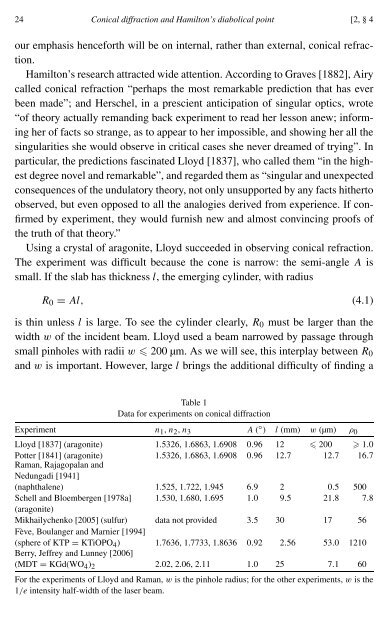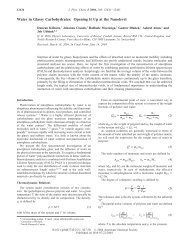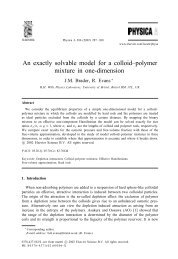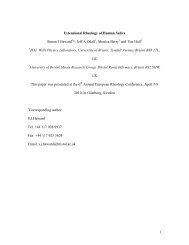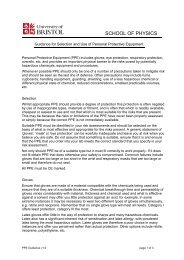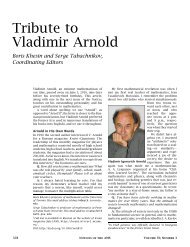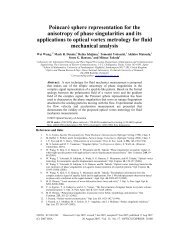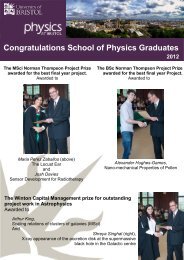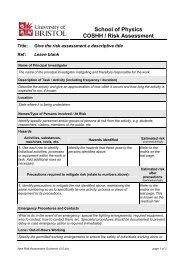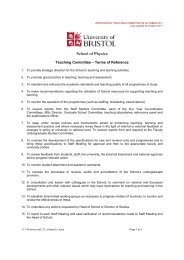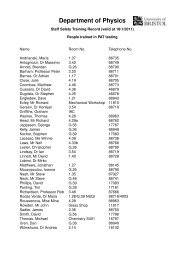Conical diffraction: Hamilton's diabolical point at the ... - Physics home
Conical diffraction: Hamilton's diabolical point at the ... - Physics home
Conical diffraction: Hamilton's diabolical point at the ... - Physics home
You also want an ePaper? Increase the reach of your titles
YUMPU automatically turns print PDFs into web optimized ePapers that Google loves.
24 <strong>Conical</strong> <strong>diffraction</strong> and Hamilton’s <strong>diabolical</strong> <strong>point</strong> [2, § 4<br />
our emphasis henceforth will be on internal, r<strong>at</strong>her than external, conical refraction.<br />
Hamilton’s research <strong>at</strong>tracted wide <strong>at</strong>tention. According to Graves [1882],Airy<br />
called conical refraction “perhaps <strong>the</strong> most remarkable prediction th<strong>at</strong> has ever<br />
been made”; and Herschel, in a prescient anticip<strong>at</strong>ion of singular optics, wrote<br />
“of <strong>the</strong>ory actually remanding back experiment to read her lesson anew; informing<br />
her of facts so strange, as to appear to her impossible, and showing her all <strong>the</strong><br />
singularities she would observe in critical cases she never dreamed of trying”. In<br />
particular, <strong>the</strong> predictions fascin<strong>at</strong>ed Lloyd [1837], who called <strong>the</strong>m “in <strong>the</strong> highest<br />
degree novel and remarkable”, and regarded <strong>the</strong>m as “singular and unexpected<br />
consequences of <strong>the</strong> undul<strong>at</strong>ory <strong>the</strong>ory, not only unsupported by any facts hi<strong>the</strong>rto<br />
observed, but even opposed to all <strong>the</strong> analogies derived from experience. If confirmed<br />
by experiment, <strong>the</strong>y would furnish new and almost convincing proofs of<br />
<strong>the</strong> truth of th<strong>at</strong> <strong>the</strong>ory.”<br />
Using a crystal of aragonite, Lloyd succeeded in observing conical refraction.<br />
The experiment was difficult because <strong>the</strong> cone is narrow: <strong>the</strong> semi-angle A is<br />
small. If <strong>the</strong> slab has thickness l, <strong>the</strong> emerging cylinder, with radius<br />
R 0 = Al,<br />
(4.1)<br />
is thin unless l is large. To see <strong>the</strong> cylinder clearly, R 0 must be larger than <strong>the</strong><br />
width w of <strong>the</strong> incident beam. Lloyd used a beam narrowed by passage through<br />
small pinholes with radii w 200 µm. As we will see, this interplay between R 0<br />
and w is important. However, large l brings <strong>the</strong> additional difficulty of finding a<br />
Table 1<br />
D<strong>at</strong>a for experiments on conical <strong>diffraction</strong><br />
Experiment n 1 , n 2 , n 3 A ( ◦ ) l (mm) w (µm) ρ 0<br />
Lloyd [1837] (aragonite) 1.5326, 1.6863, 1.6908 0.96 12 200 1.0<br />
Potter [1841] (aragonite) 1.5326, 1.6863, 1.6908 0.96 12.7 12.7 16.7<br />
Raman, Rajagopalan and<br />
Nedungadi [1941]<br />
(naphthalene) 1.525, 1.722, 1.945 6.9 2 0.5 500<br />
Schell and Bloembergen [1978a] 1.530, 1.680, 1.695 1.0 9.5 21.8 7.8<br />
(aragonite)<br />
Mikhailychenko [2005] (sulfur) d<strong>at</strong>a not provided 3.5 30 17 56<br />
Fève, Boulanger and Marnier [1994]<br />
(sphere of KTP = KTiOPO 4 ) 1.7636, 1.7733, 1.8636 0.92 2.56 53.0 1210<br />
Berry, Jeffrey and Lunney [2006]<br />
(MDT = KGd(WO 4 ) 2 2.02, 2.06, 2.11 1.0 25 7.1 60<br />
For <strong>the</strong> experiments of Lloyd and Raman, w is <strong>the</strong> pinhole radius; for <strong>the</strong> o<strong>the</strong>r experiments, w is <strong>the</strong><br />
1/e intensity half-width of <strong>the</strong> laser beam.


